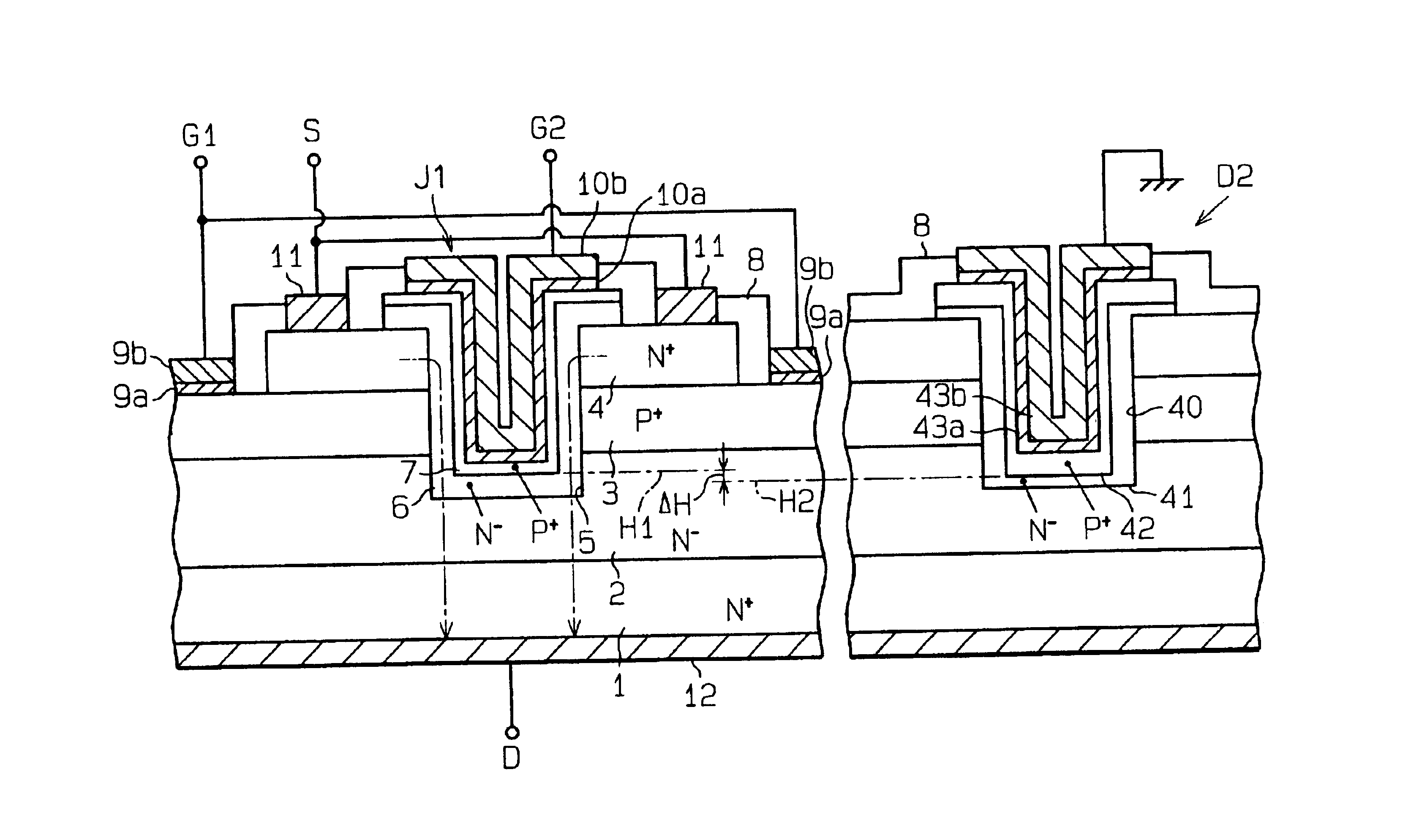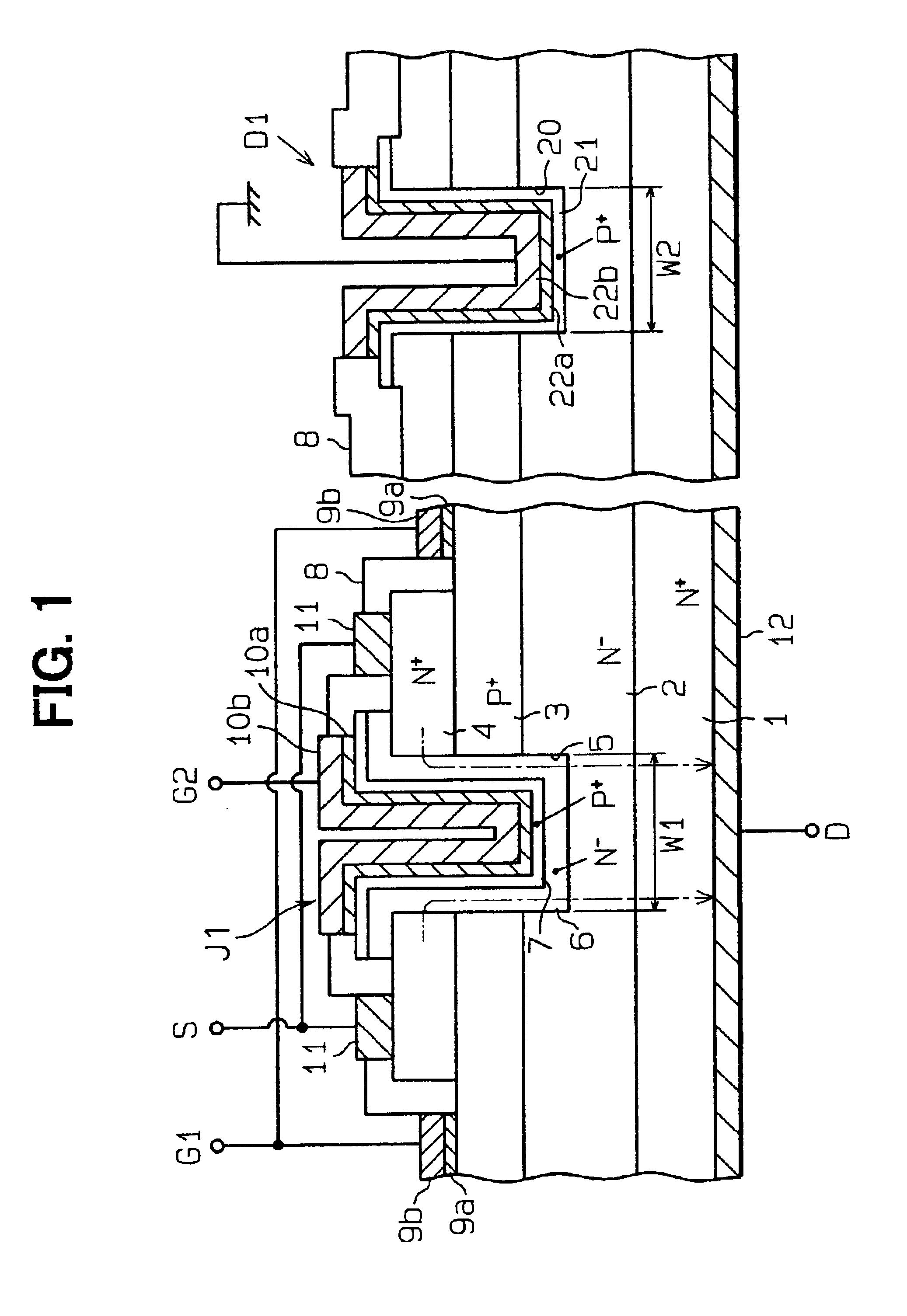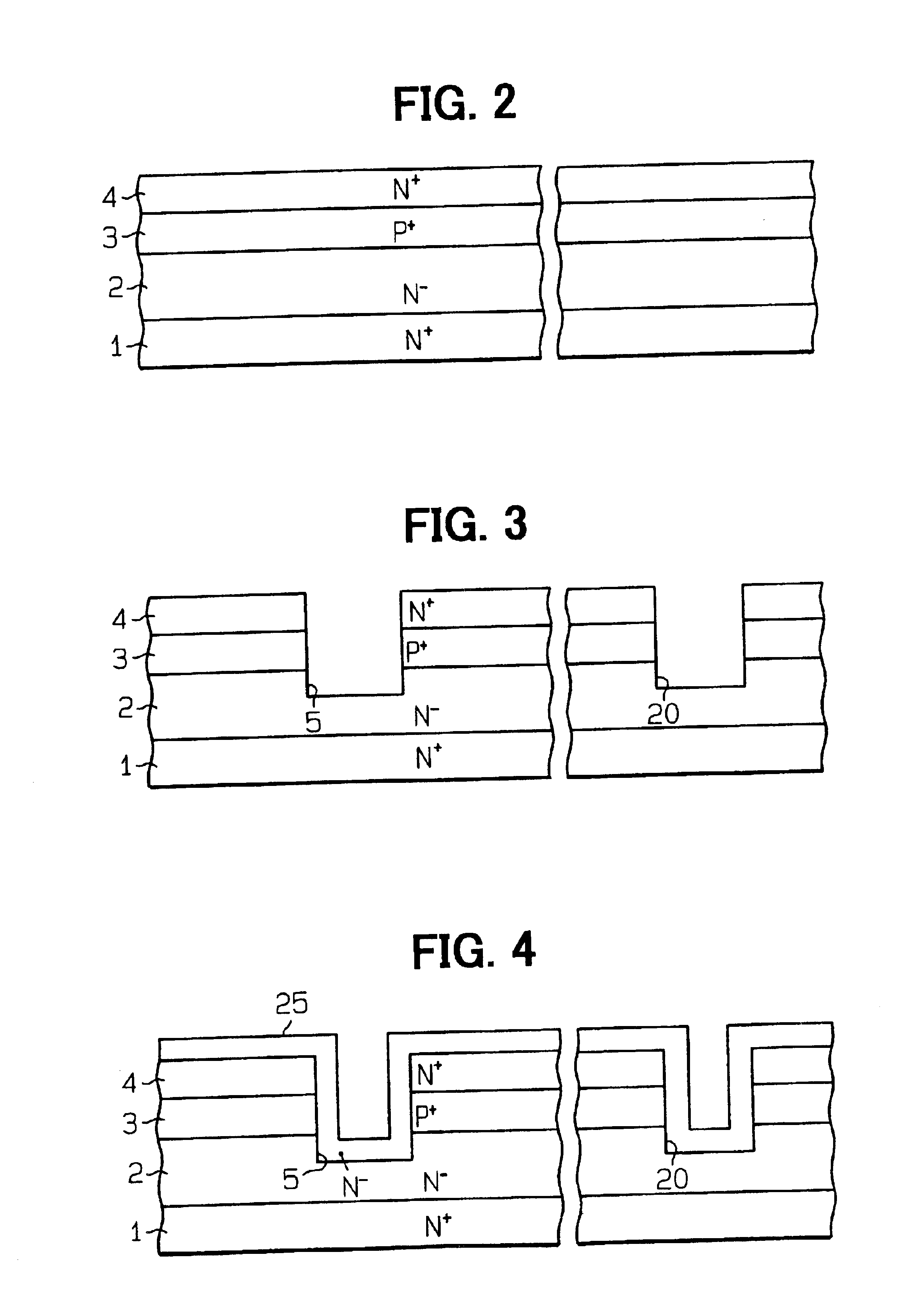Silicon carbide power device having protective diode
a technology of silicon carbide and power device, which is applied in the direction of semiconductor devices, semiconductor device details, electrical apparatus, etc., can solve the problems of static electricity, gate is not insulated from the channel region, and the proposed device is relatively easily destroyed
- Summary
- Abstract
- Description
- Claims
- Application Information
AI Technical Summary
Benefits of technology
Problems solved by technology
Method used
Image
Examples
first embodiment
As shown in FIG. 1, a silicon carbide power device according to the first embodiment includes a JFET J1 as a silicon carbide power transistor and a protective diode D1, which is a Zener or PN junction diode, as a surge absorber. The silicon carbide power device includes an n+-type substrate 1, which has a first conduction type, an n−-type drift layer 2, which has the first conduction type, a p+-type first gate layer 3 (first JFET impurity layer), which has a second conduction type, and an n+-type source layer 4, which has the first conduction type. The substrate 1 and the layers 2, 3, 4 are substantially made of silicon carbide (SiC). The substrate 1 has a front surface and a back surface, which is opposite from the front surface. The layers 2, 3, 4 are sequentially layered in the above order on the front surface of the substrate 1. The impurity concentration of the n−-type drift layer 2 is lower than those of the n+-type substrate 1 and the n+-type source layer 4.
In the JFET J1, a ...
second embodiment
As shown in FIG. 9, a silicon carbide power device according to the second embodiment includes a JFET J1 and a protective diode D2, which is a Zener or PN junction diode different in structure from the protective diode D1 of the silicon carbide power device in FIG. 1, as a surge absorber.
In the protective diode D2, a second trench 40 extends from the upper surface of the n+-type source layer 4 to the n−-type drift layer 2 through the p+-type first gate layer 3. An n−-type impurity layer 41 (first diode impurity layer) and a p+-type impurity layer 42 (second diode impurity layer), which are substantially made of SiC, are located on the surface defining the trench 40. An electrode, which includes an ohmic contact electrode 43a and a wiring electrode 43b, is located on the p+-type impurity layer 42 and is grounded. As viewed in FIG. 9, there is a difference ΔH between the bottom level H1 of the p+-type second gate layer 7 and the bottom level H2 of the p+-type impurity layer 42. The p+...
third embodiment
As shown in FIG. 16, a silicon carbide power device according to the second embodiment includes two JFETs J1 as silicon carbide power transistors and a protective diode D3, which is a Zener or PN junction diode different in structure from the protective diodes D1, D2 of the silicon carbide power devices in FIGS. 1 and 9, as a surge absorber. The protective diode D3 includes a p+-type region 50, which is located in the upper surface of the n−-type drift layer 2, and an electrode, which includes an ohmic contact electrode 51a and a wiring electrode 51b, as viewed in FIG. 16. The electrode of the protective diode D3 is located on the upper surface of the p+-type first gate layer 3. The electrode of the protective diode D3 is in ohmic contact with the p+-type first gate layer 3 and is grounded.
As viewed in FIG. 16, there is a difference ΔH in distance between the bottom level H3 of each p+-type second gate layer 7 and the bottom level H4 of the p+-type region 50. Therefore, the p+-type ...
PUM
 Login to View More
Login to View More Abstract
Description
Claims
Application Information
 Login to View More
Login to View More - R&D
- Intellectual Property
- Life Sciences
- Materials
- Tech Scout
- Unparalleled Data Quality
- Higher Quality Content
- 60% Fewer Hallucinations
Browse by: Latest US Patents, China's latest patents, Technical Efficacy Thesaurus, Application Domain, Technology Topic, Popular Technical Reports.
© 2025 PatSnap. All rights reserved.Legal|Privacy policy|Modern Slavery Act Transparency Statement|Sitemap|About US| Contact US: help@patsnap.com



